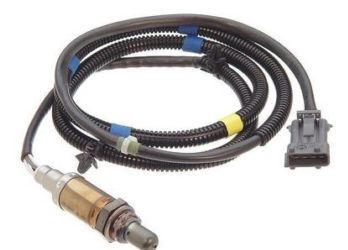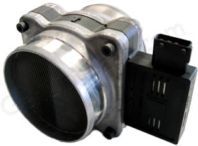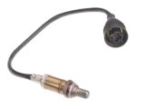The name sesnsor is derived from its operation as a sensing tool. Sensors are mainly used to measure physical values.
Today, sensor usage is common in many areas while the automotive industry is one of them. Sensors are designed to sense mechanical movements and changes, as well as changes in energy forms. Information from the sensors is processed by computers that translate it into operation.
Sensors are divided into these main operation groups:
- Pressure Sensors
- Flow Sensors
- Mechanical Sensorss
The purpose of the oxygen sensor is to maximize the engine efficiency
and produce
as few emissions as possible.
Volvo oxygen sensor
Almost every car produced in the last 20 years has an
oxygen sensor for that purpose of regulating the fuel mixture.
Oxygen sensors are surprisingly rugged considering the environment they are in.
The performance of the oxygen sensor tends to diminish with age and eventually, sensors
wear out and have to be replaced.
The lab specializes in diagnostics and replacement of fault sensors
Most oxygen sensors wear out after 50,000km - 80,000km of usage. Newer sensors with heating option, will last 100,000km - 160,000km according to the type of driving and the conditions (city/highway).
A rich mixture is when there is less air than in the optimal ratio (perfect ratio). In that case,
fuel leftovers are found after combustion. This unburned fuel creates pollution and
therefore, a rich mixture is bad.
A lean mixture is the opposite, means when there is more air than in the perfect ratio and then
there is
an excess in oxygen.
A lean mixture tends to produce more nitrogen-oxide pollutants, and in some cases,
it can cause poor performance and even engine damage.
The oxygen sensor detects if the mixture is rich or lean by using (in most cases) a chemical
reaction that generates a voltage which is sent to the ECU. The ECU examines the voltage to
determine if the mixture is rich or lean, and controls the amount of fuel the engine receives
accordingly.
The lab diagnoses and repairs damaged mass air-flow sensors
The mass air flow sensor determines the mass of air that enters the engine. The density of the air changes with temperature and pressure differences.

Mass airflow meter Therefore, it is used to calculate the correct air mass to the engine's operation under changing conditions.
The ECU calculates the amount of fuel injected to the engine at a given situation by receiving data about temperature, pressure and load from the sensors
When a mass airflow sensor is used in conjunction with an oxygen sensor, the engine's air to fuel ratio can be controlled very accurately.
N. Eyal & Co. vehicle lab specializes in electronic systems diagnostics and repairs.
The lab repairs all car computers including: Engine Control Units (ECU), Transmission Control Units (TCU), immobilizer, climate control, speedometers and instrument panels. As well as sensor replacement and immobilizer computer reset.
In addition, we repair ABS controllers and stability control units and install airbags and seatbelt pre-tensioners.



